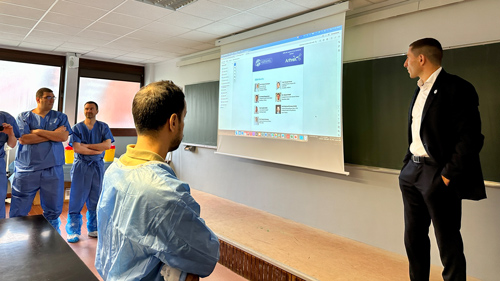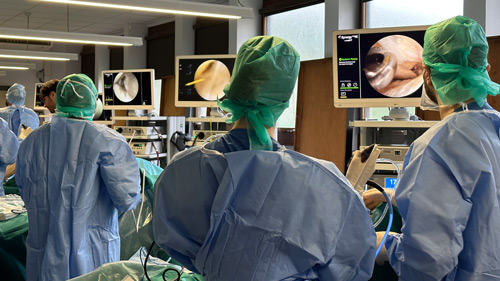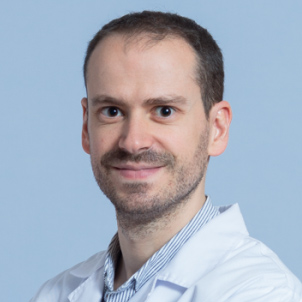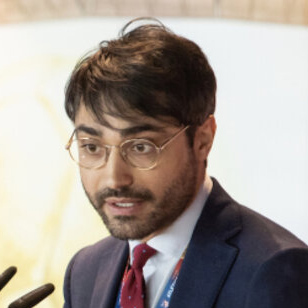Levi Reina Fernandes and Iacopo Romandini share their experience at the ESSKA pre-course, where international expert knee surgeons lead a day of practical sessions and presentations on surgical practice, exploring arthroscopic approaches, ACL reconstruction techniques, and more in a dynamic learning environment.

The day commenced early at the Institut d’Anatomie et de Simulation Chirurgicale, where we were welcomed by an outstanding team and a state-of-the-art setup, laying the groundwork for a highly engaging and productive experience.
The group was welcomed by seven internationally renowned knee surgery experts, who were fully committed to providing in-depth teaching on rotational knee instability and leading comprehensive discussions on the most recent developments and key controversies related to this joint.
Following a brief introduction by Etienne Cavaignac, the session focused on the posteromedial compartment of the knee. Simone Perelli presented the approach and how to diagnose ramp lesions, while Vincent Marot demonstrated how to perform a suture via a posteromedial portal using a suture hook.
We then moved on to cadaveric training, successfully replicating the procedures we had just observed, including ramp lesion repair through a posteromedial and trans-septal approach.
 After a short coffee break, the focus shifted to Camilo Helito’s recent highlight in his clinical practice — the use of a rectus femoris graft — and we were eager to try it.
After a short coffee break, the focus shifted to Camilo Helito’s recent highlight in his clinical practice — the use of a rectus femoris graft — and we were eager to try it.
We returned to the cadaver lab, where we chose to train two techniques: ACL + ALL reconstruction using a rectus femoris graft, and pediatric ACL reconstruction with an over-the-top technique. With the expert guidance of our faculty member, we were able to refine our skills and gain valuable tips and tricks for managing this less common scenario in our daily clinical practice.
We paused for lunch and resumed with a session by Edoardo Monaco, who presented on extra-articular procedures.
From the rationale for performing them to a comprehensive overview of the various surgical techniques available, the focus remained on addressing rotatory instability.
 Back at our anatomical specimen, this time with an open program, we proceeded with LCL/MCL reconstruction, several meniscal suturing techniques, and posterior capsular imbrication for hyperextension.
Back at our anatomical specimen, this time with an open program, we proceeded with LCL/MCL reconstruction, several meniscal suturing techniques, and posterior capsular imbrication for hyperextension.
As the day came to a close, we engaged in a collective discussion of several clinical cases before ending the session.
In conclusion, it was an exceptional day in terms of learning, further enhanced by the cadaveric training — the closest experience to real-life surgery. The opportunity to be guided through this process by some of the world’s leading knee surgeons is something for which we are profoundly grateful to the organizing team. It was an important theoretical consolidation of the procedures we had observed during our PCO Tour.
If you get the opportunity: sign up for the 2026 edition!


